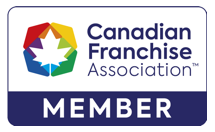Chechui v Nieman is a recent decision from the Ontario Court of Appeal which deals with the often contentious matter of whether certain transfers constitute a gift or a resulting trust.
Background
Ian and Victoria were in a common law relationship for approximately three and a half years. In 2010, Ian’s mother, Dianne, purchased a house on Austin Terrace in Toronto (the “Austin Terrace House”) for Ian and Victoria to live in. Ian and Dianne owned the Austin Terrace House as tenants in common, with Ian owning 99 percent and Dianne 1 percent.
In March of 2013, Ian and Victoria decided to purchase a house on Brookdale Avenue in Toronto (the “Brookdale House”), with the intention that Dianne would live with them. Two steps were taken to finance this purchase:
- Victoria obtained a $1 million dollar mortgage (later converted to a joint line of credit) in her and Ian’s names; and,
- RBC (the mortgagee) required Dianne to provide Ian and Victoria with $1.7 million.
Ian and Victoria took title to the Brookdale House as joint tenants. Dianne died shortly thereafter in May of 2013.
In October of 2013, Ian sold the Austin Terrace House and used the proceeds to repay the $1 million joint line of credit on the Brookdale House. Additionally, Ian put $800,000 in a joint RBC investment account that was intended to be for Victoria’s benefit in the event that Ian died.
In January of 2014, Ian and Victoria separated. Victoria applied to the Superior Court of Justice in May of 2014 for orders that included the following relief: (1) the partition and sale of the Brookdale property, with the proceeds to be equally divided, and (2) the funds in the RBC investment account to be divided equally.
Victoria and Ian’s Positions
Victoria claimed that because Ian and she were joint tenants of the Brookdale House, they were each entitled to 50 percent of its sale proceeds, despite Ian having paid $1 million dollars more than her towards its purchase.
Ian claimed Victoria’s interest in the RBC account and Brookdale House was held in trust by her for his benefit, whereby he was the sole beneficial owner of these assets. Ian also argued that the gift of $1.7 million from his mother was to him alone, rather than to him and Victoria.
Findings of the Lower Court and Court of Appeal
-
Who is the beneficial owner of the RBC account?
- At trial, the lower Court found that Ian did not gift the RBC account to Victoria, but rather, only gifted the right of survivorship in the event that he died. Accordingly, Victoria held the RBC investment account in a resulting trust for Ian.
- This issue was not contested on appeal.
-
Who is the beneficial owner of the Brookdale House?
- The lower Court found that both Ian and Victoria were beneficial owners of the Brookdale House.
- The Court of Appeal confirmed the lower Court’s finding.
-
Was Dianne’s gift of $1.7 million to both Ian and Victoria?
- The lower Court found that this gift was to both Ian and Victoria.
- The Court of Appeal confirmed the lower Court’s finding, taking into consideration that Dianne obtained the advice of two lawyers regarding the gift. The first of such lawyers, Rachel Blumenfeld, recommended that Dianne provide this money in the form of a mortgage, but Dianne did not take this advice. Instead, Dianne executed a gift letter which was signed by herself, Ian, and Victoria. The language in such gift letter made it clear that this was a gift to both Ian and Victoria for the down payment on the Brookdale House.
-
Was Victoria unjustly enriched?
- The lower Court found that Victoria was not unjustly enriched, as the gift from Dianne served as a juristic reason for her enrichment regarding the Brookdale House. Absence of a juristic reason is a prerequisite to proving unjust enrichment.
- The Court of Appeal found that the lower Court had considered and properly dismissed this claim.
-
Did Ian intend to gift Victoria $500,000 by repaying the $1 million joint line of credit OR was a resulting trust created?
- The lower Court found that Ian gifted the $1 million to Victoria when he paid off the joint line of credit. The lower Court’s reasons for this finding were as follows:
- the presumption of resulting trust was inapplicable to the line of credit, as such presumption can only apply on the purchase or transfer of property and not to a post-purchase reduction of debt associated with the purchase or transfer of such property; and,
- if the presumption of resulting trust did apply to the line of credit, such presumption was rebutted by the evidence of Ian and Victoria’s common intention that they always intended to own the Brookdale House “jointly and equally regardless of their contributions to the purchase.”
- The Court of Appeal found that the lower Court’s finding on this point was “tainted by palpable and overriding error” for the following reasons:
- The line of credit tied to the Brookdale House was a joint debt of both Victoria and Ian. Each was responsible for repayment of at least 50 percent of this debt.
- Ian’s repayment of the $1 million line of credit in full was a gratuitous transfer directly linked to the purchase of the house, meaning the following principles applied:
- the actual intention of the transferor (Ian) was the governing factor to consider;
- the transferee (Victoria) was deemed to have been holding the transferred property in trust for the benefit of the transferor absent evidence to rebut this presumption;
- the transferee bore the onus of proving that the transferor intended to gift the transferred property rather than create a resulting trust.
- Victoria did not rebut the presumption of resulting trust. She admitted in her cross-examination that Ian’s repayment of her share of the line of credit was not a gift and that the line of credit was an obligation of both her and Ian.
- Ian and Victoria’s intention to own the Brookdale House jointly did not mean that Ian intended to gift Victoria repayment of her share of their joint debt and thereby forego a claim to be credited for this. In other words, Ian and Victoria’s joint ownership of the Brookdale House did not necessarily rebut the presumption of resulting trust.
- Ian’s use of the proceeds of sale from the Austin Terrace House further suggested that Ian did not intend a gift to Victoria by repaying the line of credit. Basically, there was no evidence to support the lower Court’s conclusion that the RBC investment account was not a gift but the repayment of the line of credit was a gift.
- The lower Court found that Ian gifted the $1 million to Victoria when he paid off the joint line of credit. The lower Court’s reasons for this finding were as follows:
Consequence
Victoria was entitled to a 50 percent interest in the Brookdale House. Ian was entitled to a $500,000 credit of the sale proceeds of the Brookdale House to account for him repaying Victoria’s 50 percent share of the $1 million joint line of credit tied to the Brookdale House.
Some Take-Aways
- Payment of a joint debt can give rise to a resulting trust, whereby the party that pays more than his or her 50 percent share of such debt can be compensated for any overpayment. The presumption of resulting trust is not limited to the purchase or transfer of property; it can apply to a post-purchase reduction of debt associated with the purchase or transfer of such property.
- If a gratuitous transfer is being made, the transferor should carefully document his or her intention and seek legal advice. Consider protecting any transfer of funds through some form of security.
- Think twice when gifting to spouses or partners of family members. It is important to consider a potential breakdown of the relationship of spouses or partners when contemplating gifts to both of them, whether during your lifetime or in your Will. You should obtain legal advice to assess the best way to transfer property to accomplish your wishes, while at the same time protecting the interests of those you intend to benefit from such transfer.
If you are considering making a gift or a loan to a loved one or otherwise, we would be happy to discuss your options with you at Mills & Mills. Please call us at 416-863-0125 or contact us online.

 2 St Clair Ave West
2 St Clair Ave West


